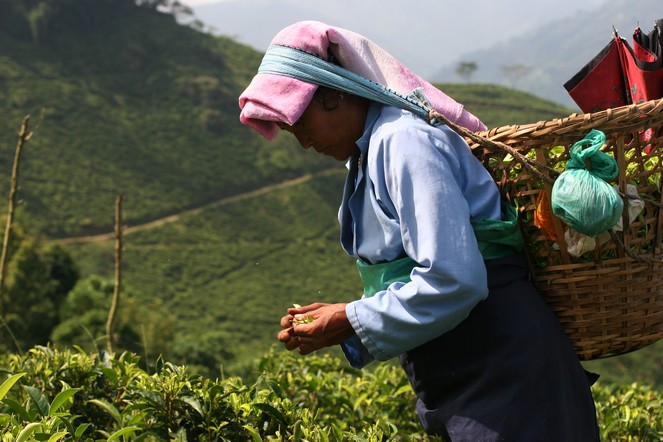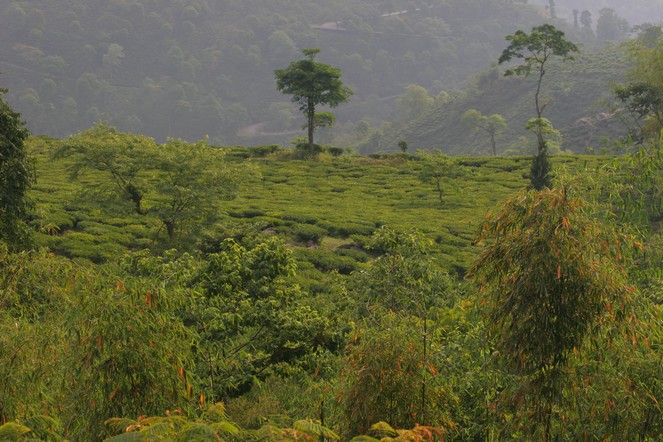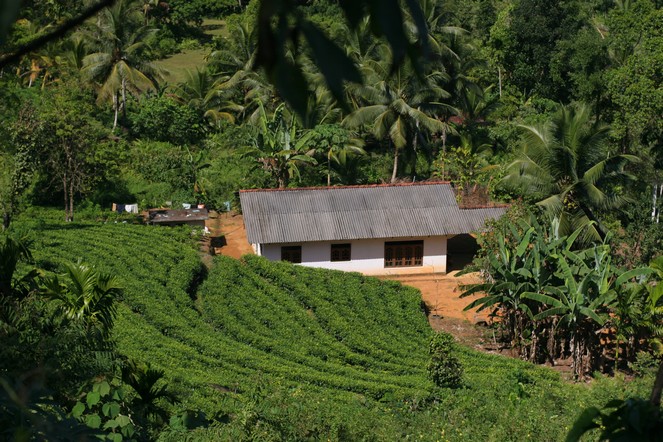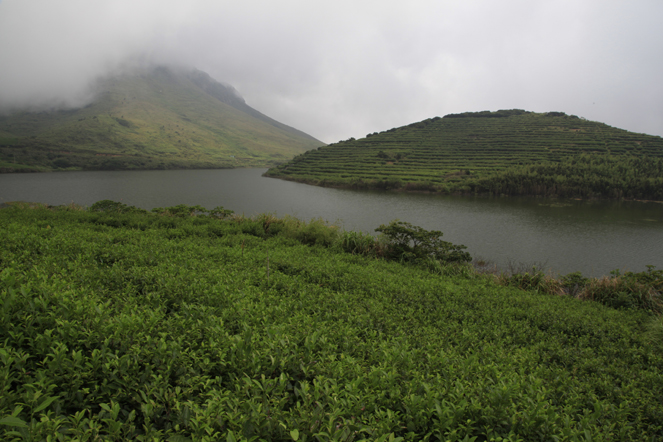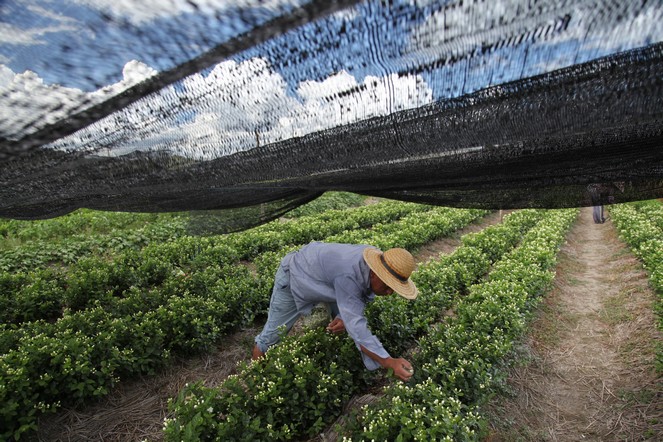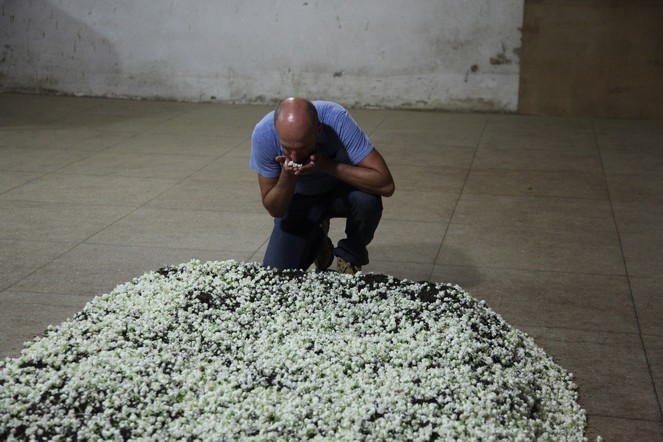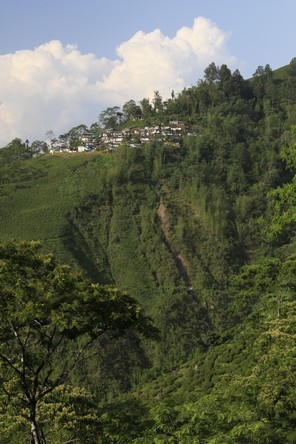For those dreaming of travelling through beautiful scenery, the month of October fulfils that promise in the regions south of the Himalayas, like here in Darjeeling. After several months of intense heat, storms and torrential rain, a clear sky reveals the highest peaks.
From plant to cup
The autumn colours of rooibos
The tea plant is an evergreen and its leaves do not change colour when cold weather follows the summer. So, to bring you some seasonal autumn colour, I have chosen an image of rooibos leaves spread out in very thin layers to dry on the ground, as they oxidise after being watered.
Teas from the Margaret’s Hope garden
The Margaret’s Hope garden is one of the best known in Darjeeling. Its reputation is justified by the quality of its teas and also because, from time to time, this plantation products batches of a truly remarkable quality. Of course, you have to taste many samples before finding a rare gem, but that is exactly what my work entails: drinking large quantities of different teas every day.
Last spring I bought a batch from Margaret’s Hope that I am sure you remember if you were lucky enough to taste it. The planter called it White Delight. And I have just chosen a Margaret’s Hope DJ512 which has such an incredible floral bouquet it is worth the detour too. For connoisseurs, it comes from the varieties P312 and AV2.
The autumn Darjeelings are arriving!
At the moment I’m tasting some delicious teas from Darjeeling. The autumn harvest (third flush) is early, and I have just chosen a Phuguri DJ168 as well as a Margaret’s Hope Pure Clonal DJ512; both are quite exceptional. They should arrive in France in about 10 days. As connoisseurs know, and to simplify a little, autumn Darjeelings are generally more woody than summer Darjeelings (second flush), which in turn are fruitier than spring Darjeelings (first flush). Whatever the season, though, these teas grow on mountains that offer breathtaking views.
Small plantation in the south of Sri Lanka
A very special tea plantation
The jasmine flowers that scent our tea
It is difficult to imagine the amount of work that goes into making the tea we drink. To produce one kilo of a top quality jasmine tea, for example, it takes 2.5 kilos of jasmine flowers, no less. With 100 flowers, you can make just 25 grams. So no fewer than 10,000 flowers, individually picked by hand, are needed to scent a kilo of tea. And the plucking of flowers in the time-honoured tradition, which I witnessed last week in southern China, sometimes takes place in scorching temperatures.
Scenting tea with jasmine
The steep slopes of Darjeeling
Camellia sinensis grows very happily on steep terrain, as it doesn’t like water stagnating around its roots. In some regions of the world, like Nepal, or here in Darjeeling, the slopes are very impressive. As I travel around the countryside I often discover a little village clinging onto the hillside above a field of tea. Sometimes you wonder how the pluckers manage to harvest the leaves in such conditions.



